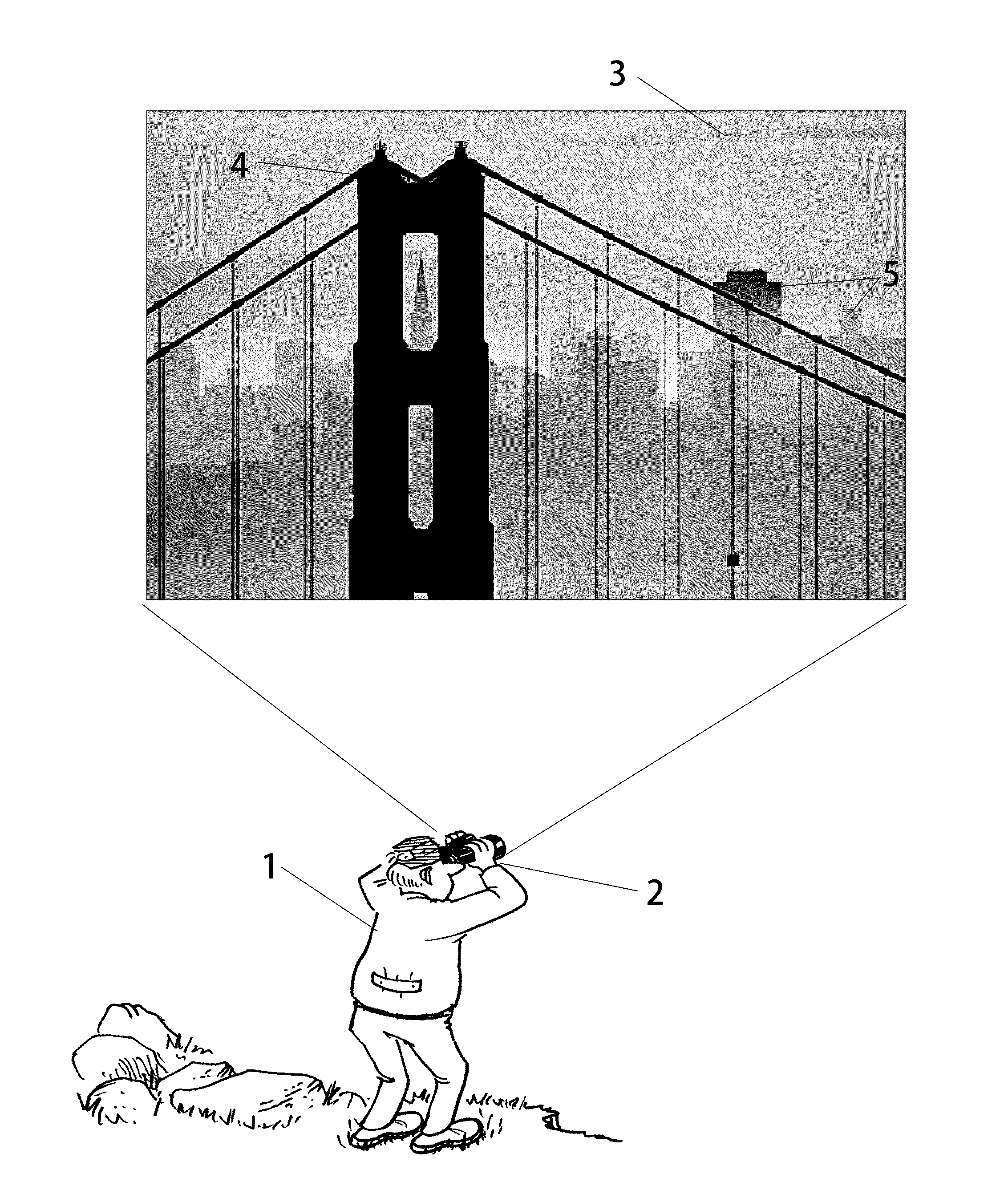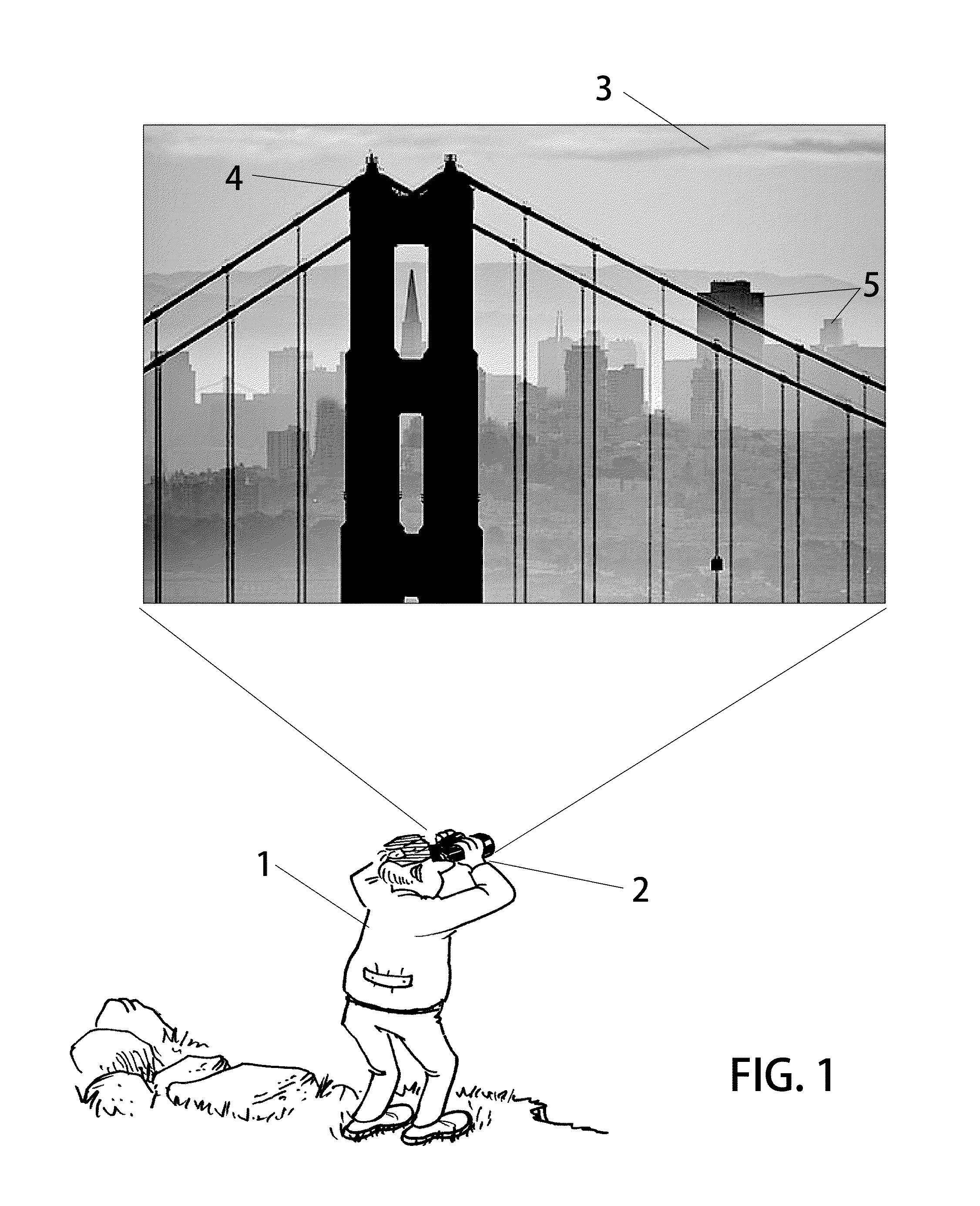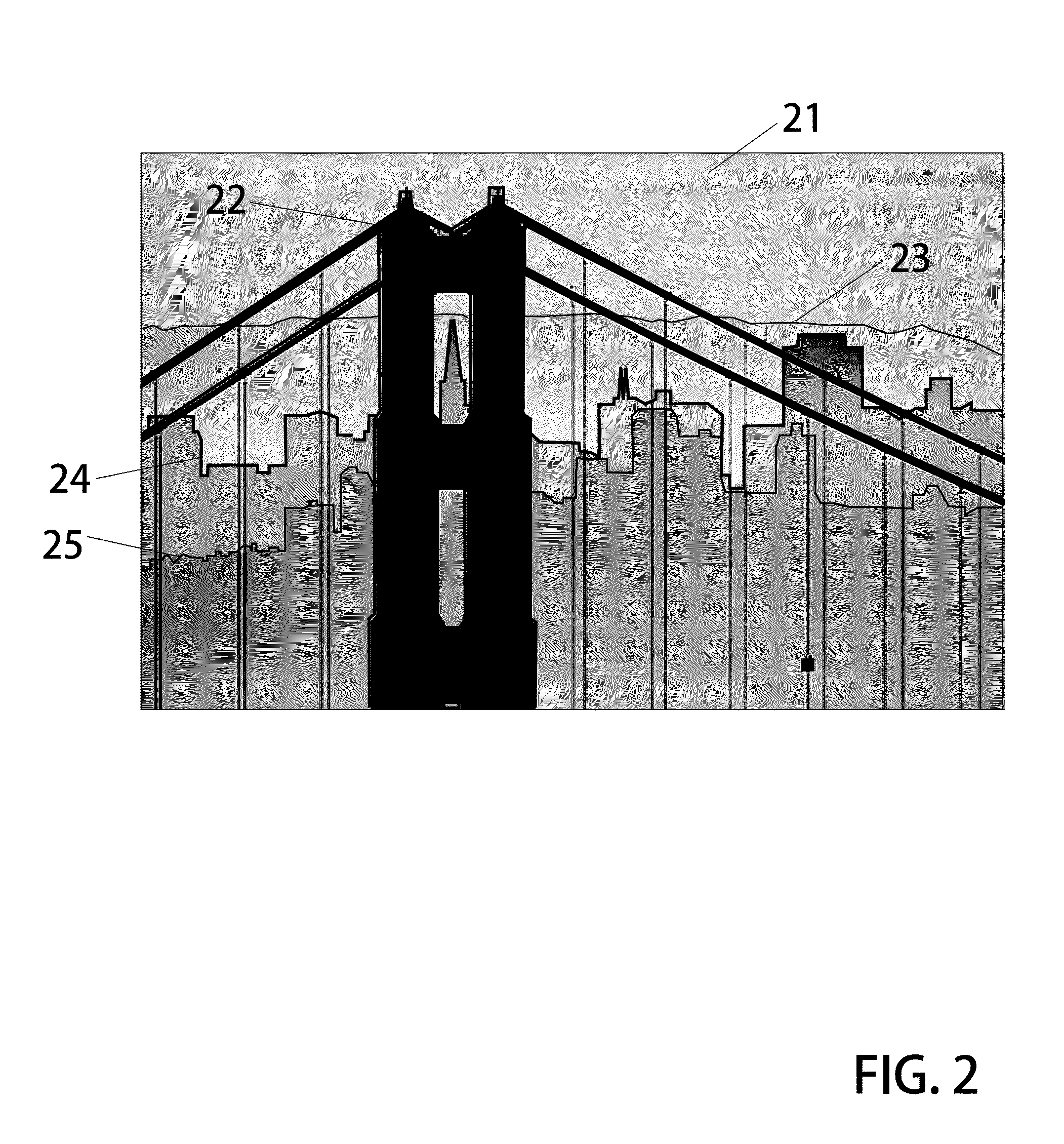Dynamic Augmented Reality Vision Systems
a vision system and dynamic technology, applied in closed circuit television systems, instruments, computing, etc., can solve the problems of inability to use and invent the art, and achieve the effects of increasing the level of detail, low level of augmentation, and increasing imagery
- Summary
- Abstract
- Description
- Claims
- Application Information
AI Technical Summary
Benefits of technology
Problems solved by technology
Method used
Image
Examples
Embodiment Construction
[0028]In advanced electronic vision systems, optical images are formed by a lens when light falls incident upon an electronic sensor to form a digital representation of a scene being addressed. Presently, sophisticated cameras use image processing techniques to draw conclusions about the states of a physical scene being imaged, and states of the camera. These states include the physical nature of objects being imaged as well as those which relate to environments in which the objects are found. While it is generally impossible to manipulate the scene being imaged in response to analysis outputs, it is relatively easy to adjust camera subsystems accordingly.
[0029]In one illustrative example, a modern digital camera need only analyze an image signal superficially to determine an improper white balance setting due to artificial lighting. In response to detection of this condition, the camera can adjust the sensor white balance response to improve resulting images. Of course, an ‘auto wh...
PUM
 Login to View More
Login to View More Abstract
Description
Claims
Application Information
 Login to View More
Login to View More - R&D
- Intellectual Property
- Life Sciences
- Materials
- Tech Scout
- Unparalleled Data Quality
- Higher Quality Content
- 60% Fewer Hallucinations
Browse by: Latest US Patents, China's latest patents, Technical Efficacy Thesaurus, Application Domain, Technology Topic, Popular Technical Reports.
© 2025 PatSnap. All rights reserved.Legal|Privacy policy|Modern Slavery Act Transparency Statement|Sitemap|About US| Contact US: help@patsnap.com



